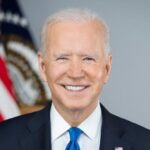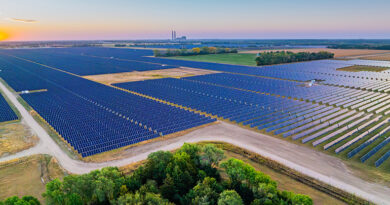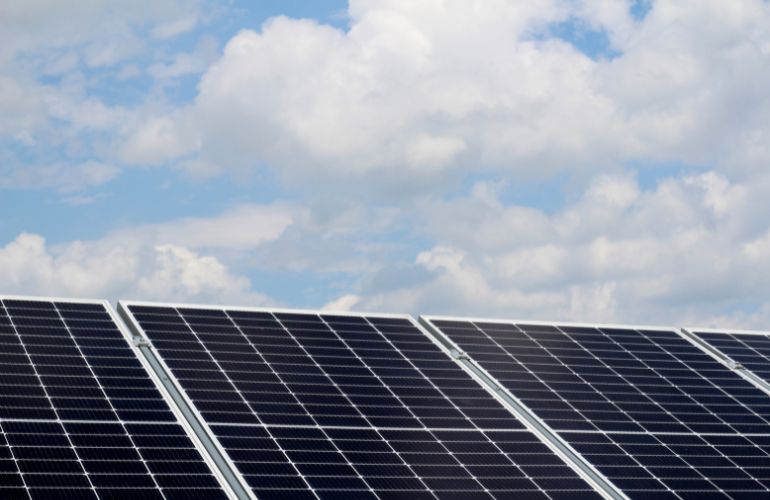How a forced-labor prevention act may affect U.S. solar panel imports
By Paul Wormser, VP of Technology, Clean Energy Associates
Solar energy is the fastest-growing source of electricity in the country. From 2014 to 2019 generation nearly tripled, and, thanks to falling costs and the new Biden administration’s green agenda, investments are expected to surge in the year ahead. However, a new law is making its way through Congress that threatens to introduce a serious setback to the U.S. companies riding this hot streak — unless they begin preparing now.
 The vast majority of the world’s highly purified polysilicon — a key component in most solar panels — is produced in China. Nearly half of the world’s supply comes from Xinjiang, a region that’s come under intense scrutiny from the West for alleged human rights abuses, including forced labor.
The vast majority of the world’s highly purified polysilicon — a key component in most solar panels — is produced in China. Nearly half of the world’s supply comes from Xinjiang, a region that’s come under intense scrutiny from the West for alleged human rights abuses, including forced labor.
In the United States, laws on the books since the 1930s have banned the importation of products made with forced labor. But in the weeks and months ahead — perhaps as soon as this month — congressional lawmakers are expected to take this farther.
Under the Uyghur Forced Labor Prevention Act, any material containing even a single component from Xinjiang, or suspected of having used any labor in Xinjiang, can be barred entry to the United States. The measure passed the House in September with overwhelming bipartisan support. Similar backing is expected in the Senate and from President Biden.
If you are in the business of importing solar modules, you likely need to start preparing now. That means avoiding using any goods from Xinjiang in all the products you’re importing to the United States.
This wasn’t always the case: Until recently, companies could take steps to prove, to the satisfaction of U.S. Customs, that their Xinjiang supply chains did not use forced labor. Beginning last year, though, auditing firms stopped examining Xinjiang companies’ supply chains, under increasing pressure from human rights activists who alleged that government interference had made such inspections virtually worthless. As a result, if any point of your supply chain runs through Xinjiang, it is now virtually impossible to certify that it is free of forced labor.
As a result, the first step in preparing for the new law starts on paper: Before you begin relocating assembly centers, you’ll need to make sure that your company can demonstrate that it fully complies with U.S. law — including the expected no-forced-labor legislation.
Under the new law, Customs authorities will examine whether companies have what’s called a “social compliance system.” That includes having a code of conduct that explicitly states your company does not support, condone or do business with organizations using forced labor — and that the company requires the same from its vendors.
But that is not enough: You’ll also have to show that your company educates its employees about the code of conduct, has enforcement mechanisms in place, and that the code is actively maintained and updated. Companies should also require their suppliers to include code-of-conduct provisions in their contracts, helping ensure that everyone along the value chain stays in lockstep — and preventing any unpleasant surprises.
The next step is implementing “full traceability,” which examines the entire production, refining, manufacturing and assembly process to ensure that no part occurs in or hails from Xinjiang. Under the new law, it won’t be enough that a solar panel’s wafers, cells and modules weren’t assembled in the region — a company will also have to demonstrate that even the base ingredients, such as the polysilicon or even the silicon metal used for polysilicon, came from outside Xinjiang.
Finally, like the certification processes for conflict-free diamonds, sustainable cotton, fair-trade coffee and organic produce, importers will likely need to hire a third-party company to verify that the traceability process is complete and accurate, and that no part of the supply chain is coming from Xinjiang.
Each step of this process could take weeks or months to execute. Meanwhile, under existing law, Customs authorities already have the ability to stop a shipment if they receive a complaint or suspect that goods were made with forced labor. Under the expected new law, that authority will expand, allowing Customs to block imports of any goods containing just one component originating from Xinjiang, unless the company can clearly demonstrate that forced labor was not used.
The United States is on track for another year of record solar installations — assuming the expected legislation doesn’t interrupt supply. To borrow a proverb, the best time to institute a code of conduct, full traceability and third-party audits may have been years in the past, but the second-best time is now.
Paul Wormser is vice president, technology, at Clean Energy Associates. Paul has 40+ years of solar industry experience with management roles in solar technology and business development for the world’s largest solar companies, including SunEdison, First Solar, Sharp, Konarka, Mobil Solar and Exxon Solar.
<!–
–>
Original Source: https://www.solarpowerworldonline.com/2021/02/how-a-forced-labor-prevention-act-may-affect-u-s-solar-panel-imports/












